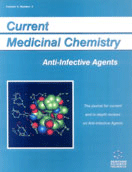Abstract
Control of microbial growth, through inhibition of proteases including serine, cysteine and metalloproteases, has been a focus of both man and nature. Although β-lactams have proven to be most successful in control of pathogens, their utility has become significantly limited as a result of development of antibiotic resistance, especially the production of extended spectrum β- lactamases. Preparations of biologically active γ- or δ-lactam mimics of penicillin, have led to the discovery of several types of bioisosters of b-lactams. These mimics can not only exhibit antimicrobial activity, but similar to their b-lactam parentage, they can also act as inhibitors of β- lactamases. Both synthetic and naturally occurring γ-lactams and β-lactones also inhibit mammalian and viral enzymes. In addition to the β-lactam analogs, several other classes of inhibitors, whose inhibitory mechanism is based on acylation of proteases have been developed. These include the heterocyclic inhibitors, such as isocoumarins, benzoxazinones, epoxides, sulfonamides, and pyrazolidinones. While acylation is the mechanism of choice for both these and β-lactam inhibitors, alternative mechanisms for enzyme inhibition are described including alkylation and chelation, as in the case of metalloproteases. Novel approaches, including mimicking nature though the use of homoserine lactones is a new direction, which may aid in reduction of bacterial loads and inhibition of colonization. The focus of this review is to compare the various structurefunction relationships of these non-β-lactam mimics.
Keywords: serine proteases, b-lactamases, human leukocyte elastase, serine protease inhibitors, lactones, lactams, tetracyclins
 7
7

